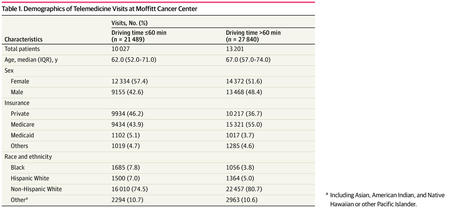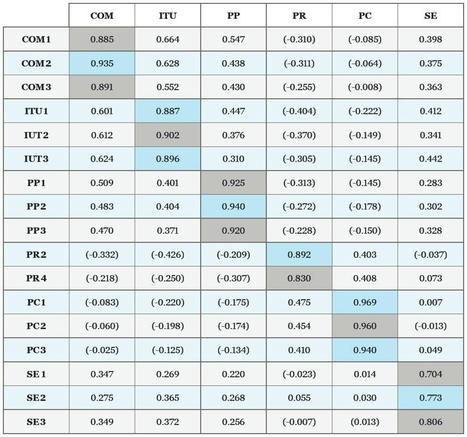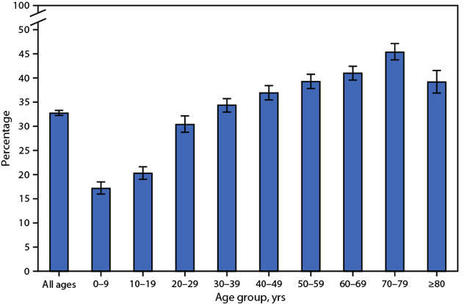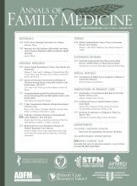 Your new post is loading...

|
Scooped by
HAS-veille
February 3, 2023 1:33 AM
|

|
Scooped by
HAS-veille
February 1, 2023 8:13 AM
|
Soins Gérontologie - Vol. 28 - N° 159 - p. 16-20 - La télémédecine, une solution médicale en zone sous-dotée - EM consulte

|
Scooped by
HAS-veille
February 1, 2023 3:09 AM
|
This cross-sectional study of patients with cancer treated by a comprehensive cancer center in Florida estimates the reductions carbon emissions associated with increased use of telemedicine visits.

|
Scooped by
HAS-veille
January 30, 2023 5:50 AM
|
Data and research on health including biotechnology, cancer, health care, health spending, health insurance, fitness, dementia, disability, obesity, smoking, genetics and mortality., The use of telemedicine was quite limited in most OECD countries before the COVID-19 pandemic, held back by regulatory barriers and hesitancy from patients and providers. In early 2020, as COVID-19 massively disrupted in-person care, governments moved quickly to promote the use of telemedicine. The number of teleconsultations skyrocketed, playing a vital role in maintaining access to care, but only partly offsetting reductions in in-person care. This report provides an overview of the use of telemedicine in OECD countries, describing how governments scaled up remote care during the pandemic and exploring the impact that this massive shift to remote care has had on health care system performance. Telemedicine may be here to stay, but questions remain concerning how to regulate its use, how to pay for it, how to integrate it with in-person care, and how to make sure that it constitutes good value for money for all. This report puts forth priorities for policy makers to inform the discussion and to promote the best use of remote care services in the future.

|
Scooped by
HAS-veille
January 30, 2023 2:30 AM
|

|
Scooped by
HAS-veille
January 23, 2023 7:38 AM
|
Although health care professionals and patients had some concerns about reduced visit schedules and use of televisits, several potential benefits were also noted. Our synthesis of qualitative evidence provides helpful insights into the perspectives, preferences, and experiences of important stakeholders with respect to implementing changes to prenatal care delivery that may complement findings of traditional quantitative evidence syntheses.

|
Scooped by
HAS-veille
January 18, 2023 10:40 AM
|
Les équipes de gestion de santé publique dans certains pays sont confrontées à des problèmes majeurs, tels que le manque de médecins ou d’infrastructures et de matériel de santé, des services d’urgence hospitaliers surchargés, des zones mal desservies par les services de santé ou, plus récemment, la mise en œuvre d’une gestion de crise pour faire face à la pandémie du Covid-19. Les solutions d’e santé pourraient aider à résoudre certaines de ces situations. Les jeunes générations en particulier auraient tendance à négliger leur santé, ce qui peut entraîner de futurs et graves problèmes de santé. Cet article vise à analyser la perception par les jeunes adultes d’un dispositif de téléconsultation, la cabine de télémédecine (CT). Il s’appuie notamment sur la Théorie du Comportement Planifié (Ajzen, 1991) et ses prolongements, pour mesurer l’influence des croyances comportementales et du contrôle perçu sur l’intention d’utiliser la CT. Cette étude applique une méthodologie quantitative. Les réponses de 150 étudiants inscrits en master dans des écoles de commerce françaises étaient prises en compte pour l’analyse. Les résultats, en utilisant une approche Partial Least Squares (moindres carrés partiels) précisément le Modèle d’équations structurelles (SEM), ont confirmé l’impact fort de variables du modèle : compatibilité et auto-efficacité pour l’adoption de la cabine de télémédecine. Cette recherche contredit par ailleurs le paradoxe de la personnalisation et de la vie privée, avec un accent particulier sur les soins de santé. Elle permet également d’identifier le paradoxe technologique de la population étudiée qui est généralement ouverte au partage de ses informations privées, mais qui est réticente à partager ses données de santé. Nos résultats pourraient être utilisés par les professionnels de santé et les pouvoirs publics pour répondre à l’incertitude concernant la qualité des services fournis par les solutions de e-santé, afin de mieux gérer l’allocation des ressources dans le système de santé publique ainsi que répondre aux problèmes actuels et cruciaux des services de santé.

|
Scooped by
HAS-veille
January 16, 2023 9:49 AM
|
|

|
Scooped by
HAS-veille
February 3, 2023 1:15 AM
|
The Morbidity and Mortality Weekly Report (MMWR) Series is prepared by the Centers for Disease Control and Prevention (CDC).

|
Scooped by
HAS-veille
February 1, 2023 4:12 AM
|
Objectives. To assess the use, effectiveness, and implementation of telehealth-supported provider-to-provider communication and collaboration for the provision of healthcare services to rural populations and to inform a scientific workshop convened by the National Institutes of Health Office of Disease Prevention on October 12–14, 2021.

|
Scooped by
HAS-veille
January 31, 2023 7:40 AM
|

|
Scooped by
HAS-veille
January 30, 2023 5:41 AM
|
Le digital impacte notre vie quotidienne et devient de plus en plus présent dans…

|
Scooped by
HAS-veille
January 24, 2023 1:51 AM
|
IntroductionAcute exacerbations of chronic obstructive pulmonary disease are associated with high morbidity and mortality. Telemonitoring may reduce the frequency of hospitalization. The aim o

|
Scooped by
HAS-veille
January 19, 2023 4:27 AM
|
Background: There has been a rapid shift toward the adoption of virtual health care services in Australia. It is unknown how widely virtual care has been implemented or evaluated for the care of older adults in Australia.
Objective: We aimed to review the literature evaluating virtual care initiatives for older adults across a wide range of health conditions and modalities and identify key challenges and opportunities for wider adoption at both patient and system levels in Australia.
Methods: A scoping review of the literature was conducted. We searched MEDLINE, Embase, PsycINFO, CINAHL, AgeLine, and gray literature (January 1, 2011, to March 8, 2021) to identify virtual care initiatives for older Australians (aged ≥65 years). The results were reported according to the World Health Organization’s digital health evaluation framework.
Results: Among the 6296 documents in the search results, we identified 94 that reported 80 unique virtual care initiatives. Most (69/80, 89%) were at the pilot stage and targeted community-dwelling older adults (64/79, 81%) with chronic diseases (52/80, 65%). The modes of delivery included videoconference, telephone, apps, device or monitoring systems, and web-based technologies. Most initiatives showed either similar or better health and behavioral outcomes compared with in-person care. The key barriers for wider adoption were physical, cognitive, or sensory impairment in older adults and staffing issues, legislative issues, and a lack of motivation among providers.
Conclusions: Virtual care is a viable model of care to address a wide range of health conditions among older adults in Australia. More embedded and integrative evaluations are needed to ensure that virtually enabled care can be used more widely by older Australians and health care providers.

|
Scooped by
HAS-veille
January 18, 2023 10:16 AM
|
TELEMEDICINE NEEDS DATA - Remote healthcare has boomed since the COVID-19 pandemic, delivering clear benefits – but also highlights the need for better data.

|
Scooped by
HAS-veille
January 16, 2023 9:46 AM
|
|

 Your new post is loading...
Your new post is loading...





















